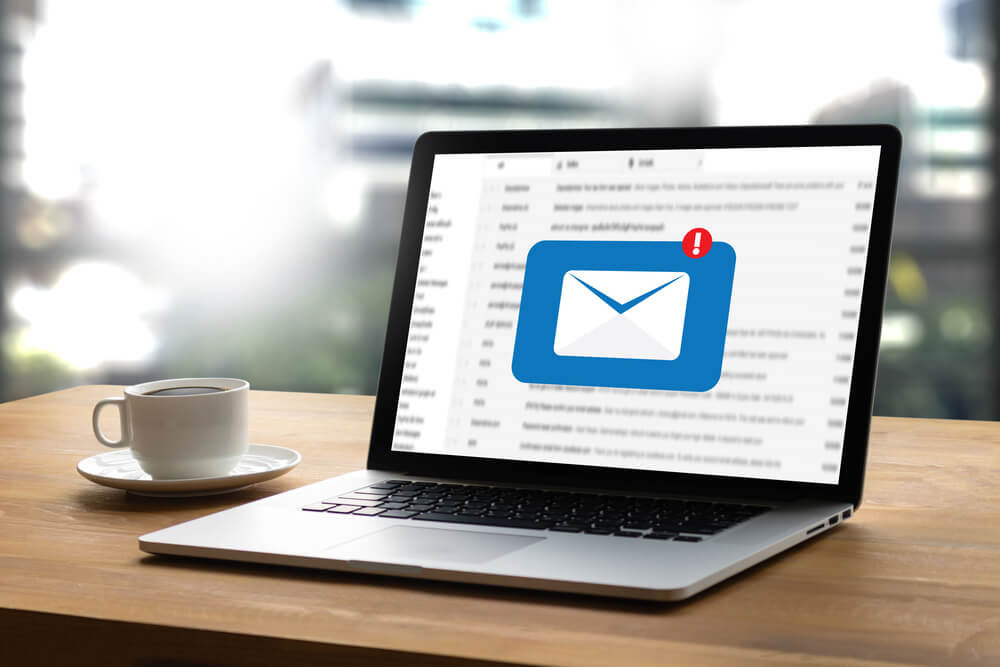
Easy Ways to Craft a Successful Email Remarketing Campaign
Are you frustrated with missed opportunities and untapped potential in your email marketing campaigns? One solution might be remarketing services.
Client-oriented digital marketing agencies customize solutions according to your objectives, audience, and metrics. However, this article lists some easy ways to rethink email advertising techniques:
 It takes a village to launch and sustain results-oriented email remarketing campaigns. Some of the key players are sales, marketing, and analytics. The problem is that these departments or teams often work independently or are siloed, collaborating only on routine activities such as fixing campaign issues.
Develop a more unified approach to remarketing by enhancing the communication and teamwork of these groups. Here are three ideas:
It takes a village to launch and sustain results-oriented email remarketing campaigns. Some of the key players are sales, marketing, and analytics. The problem is that these departments or teams often work independently or are siloed, collaborating only on routine activities such as fixing campaign issues.
Develop a more unified approach to remarketing by enhancing the communication and teamwork of these groups. Here are three ideas:
Conduct these tests on one element at a time (preferably for two weeks) to accurately identify the impact of each variation. Keep a control group for comparison and segment your audience for targeted testing. Ensure that your sample size is statistically significant to draw reliable conclusions.
 Also known as automated or event-driven emails, trigger emails are messages automatically sent to recipients based on specific user actions. These are highly targeted and personalized, effectively engaging customers, nurturing leads, and driving conversions.
One of its best uses is when potential buyers abandon their carts. The system sends reminders of the items they might need to check out and sweetens the deal with incentives and discounts.
Here are other types of trigger emails and their uses:
Also known as automated or event-driven emails, trigger emails are messages automatically sent to recipients based on specific user actions. These are highly targeted and personalized, effectively engaging customers, nurturing leads, and driving conversions.
One of its best uses is when potential buyers abandon their carts. The system sends reminders of the items they might need to check out and sweetens the deal with incentives and discounts.
Here are other types of trigger emails and their uses:
- Further break down subscribers and use dynamic content.
- Strengthen collaboration among critical departments.
- Improve content.
- Use trigger emails.
- Engage various online marketing channels to reactivate or recapture leads.
Are you looking for a full-service digital marketing agency? See the DAP difference below!
1. Further Break Down Subscribers and Use Dynamic Content
Sometimes, you are already sitting on a lead goldmine but have to learn how to encourage them to engage with your email content to push them deeper into the sales funnel. In this case, hyper-segmenting subscribers can be effective. Hypersegmentation means dividing your subscriber base into particular and targeted groups based on various criteria. These include demographics, behaviors, preferences, location, and purchase history. Doing this allows you to deliver highly relevant and personalized content to each segment. Tailored emails equal a more positive user experience and higher engagement. More satisfying interactions usually translate to higher click-through and conversion rates and a lower bounce rate. Many email marketing platforms avoid the hassle of further breaking down customers and subscribers by using advanced analytics. For instance, the algorithms can look into previous purchase histories, Internet searches, and the duration of sessions on certain pages. These tools also design progressive landing pages, depending on where your audience is in the buying journey. Remarketing services further these steps by complementing hypersegmentation with dynamic content. Using machine learning and artificial intelligence (AI), you can now deliver tailored messaging, offers, and recommendations that consistently align with your subscribers’ interests and behaviors.2. Strengthen the Collaboration among Critical Departments
 It takes a village to launch and sustain results-oriented email remarketing campaigns. Some of the key players are sales, marketing, and analytics. The problem is that these departments or teams often work independently or are siloed, collaborating only on routine activities such as fixing campaign issues.
Develop a more unified approach to remarketing by enhancing the communication and teamwork of these groups. Here are three ideas:
It takes a village to launch and sustain results-oriented email remarketing campaigns. Some of the key players are sales, marketing, and analytics. The problem is that these departments or teams often work independently or are siloed, collaborating only on routine activities such as fixing campaign issues.
Develop a more unified approach to remarketing by enhancing the communication and teamwork of these groups. Here are three ideas:
- Schedule regular meetings with sales, marketing, and analytics team representatives. Discuss campaign strategies, share insights, and align on goals and priorities. For example, review campaign performance and customer feedback as well as brainstorm ideas for improvement.
- Collaboratively map out the customer journey. Sales, marketing, and analytics teams can sit down to identify touchpoints, understand customer behavior, and define specific actions or triggers for remarketing emails.
- Encourage collaborative content creation for the remarketing emails. This motivates Sales to share ideas on the common barriers to conversion, including abandoned carts. Marketing could craft compelling copy and design visually appealing templates. Based on previous campaigns, the Analytics team can provide data on the most compelling subject lines or calls to action.
3. Improve Content
Email remarketing is trickier and more challenging because subscribers have already engaged with your brand and content. Something might have prevented them from buying or staying longer for lead nurturing. One potential culprit is your content—it does not work. It might:- Lack information or share data your subscribers have already read several times.
- Contain claims, examples, and use cases that do not highlight your authority and credibility.
- Confuse your subscribers (e.g., poorly written, vague calls to action).
- Miss visual appeal that more clearly drives the message.
| Factors to Test | Components to Measure |
|---|---|
| Subject lines | Length, font style, personalization, and power words |
| Email copy and messaging | Tone, length, variations in value propositions, and benefits |
| Call to action (CTA) | Wording, color, size, placement, and offers |
| Visual elements | Graphics, videos, color schemes, and overall design |
| Timing and frequency | Different days, hours, and audiences |
| Design and layout | Formatting (e.g., columns), templates, font styles, and white space |
| Offers and incentives | Discounts, free shipping, exclusive content, and time-limited promotions |
4. Use Trigger Emails
 Also known as automated or event-driven emails, trigger emails are messages automatically sent to recipients based on specific user actions. These are highly targeted and personalized, effectively engaging customers, nurturing leads, and driving conversions.
One of its best uses is when potential buyers abandon their carts. The system sends reminders of the items they might need to check out and sweetens the deal with incentives and discounts.
Here are other types of trigger emails and their uses:
Also known as automated or event-driven emails, trigger emails are messages automatically sent to recipients based on specific user actions. These are highly targeted and personalized, effectively engaging customers, nurturing leads, and driving conversions.
One of its best uses is when potential buyers abandon their carts. The system sends reminders of the items they might need to check out and sweetens the deal with incentives and discounts.
Here are other types of trigger emails and their uses:
| Type of Trigger Email | User Action | Remarketing Campaign |
|---|---|---|
| Browsing abandonment | A user visits certain product pages or spends a significant amount of time browsing your website without buying. | Recommend related products, offer personalized suggestions based on their browsing history, and entice them to return. |
| Post-purchase | After a user completes an order, post-purchase emails aim to drive repeat transactions. | Send order confirmations, shipping updates, and follow-up emails to gather feedback or provide product recommendations based on their recent purchase. |
| Re-engagement | This works if a user has been inactive or has not engaged with your emails for a specific period. | Offer exclusive incentives, such as discounts, for simply reactivating their profiles. |
| Upsell/Cross-sell | It is ideal for subscribers with a high customer lifetime value (CLV). | Recommend complementary or upgraded products, highlight relevant accessories, or provide exclusive offers for related items. |
5. Engage Various Online Marketing Channels to Reactivate or Recapture Leads
The best digital advertising agencies and consultants build their clients’ holistic marketing plans. They are able to leverage multiple online touchpoints when reactivating or recapturing lost leads. Suppose you are a healthcare facility. An email remarketing program might include the following:- Target individuals who have visited specific pages on your healthcare facility’s website related to services such as “orthopedic care,” “cardiology,” or “women’s health.” Use a landing page pointing to a free eBook in exchange for a subscription.
- Create a custom audience on Facebook consisting of users who have interacted with your healthcare facility’s website. Match the landing pages and calls to action to the audience’s demographics and interests for hypersegmentation.
- Send personalized appointment reminders to patients booked at your healthcare facility. Include important details such as the date, time, and location of their upcoming appointment and any pre-appointment instructions or preparation guidelines.
Summing Up
Email remarketing helps correct missed opportunities for lead nurturing and conversion. The strategies mentioned above can help you get started. However, if you would like to boost your success rate, work with experts in remarketing services. Digital Authority Partners (DAP) has already helped its clients acquire over 1.5 million leads via pay-per-click (PPC), increase the return on ad spend up to ten times, and attract 60% of mobile users to click on a PPC ad at least once a week. Contact us to learn how we did it and tailor these solutions to your business.Want To Meet Our Expert Team?
Book a meeting directly here



